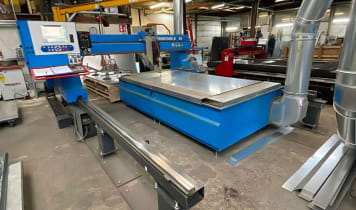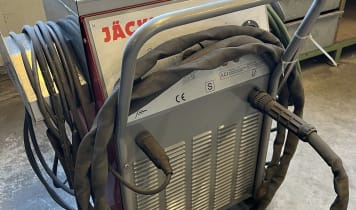A plasma cutting machine requires a heat source that is capable of raising the metal to ignition temperature. The oxidisation of the metal creates the necessary temperature; it also produces the stream of oxygen that blows away the oxides. The first flame cutting equipment relied on hydrogen for its fuel, but a modern plasma cutting machine uses acetylene and oxygen.
Operated by a central computer, a modern flame cutter machine or plasma cutter is capable of cutting shapes into metal with an exceptional level of accuracy. While there are still hand-operated alternatives on the market, they are generally used in the salvage and scrap metal industries - which require very little precision and only the most basic of flame cutting devices.
MINELLI Flame cutting machine in operation
Both flame and plasma cutters are sometimes referred to as an oxy fuel cutting machine; this heavy piece of industrial equipment is available in mobile and stationary designs. A selection of different automatic and manual steering mechanisms is still used in stationary machines. A mobile gas cutting machine usually contains a motor for automated feeding.
The process of plasma cutting is fast and accurate, which makes it perfect for producing the components needed for precision-engineered products such as cars, ships and wind turbines. Smaller operations use the flame cutting machine because of the relatively low production costs it involves. Further savings can be achieved by purchasing a used plasma cutting machine with a long history of productivity and reliability.







